Matteo Scandolo
Italian


ONF Member of Technical staff
Developer
from a
developer
to
developers
What UIs are autogenerated from the data model? How does that work?
How can we extend the UIs to provide custom functionality?
How could they be used to operate CORD in production?
What is
controlling CORD
about ?
Who are our users?
Operators
deploy CORD, attach subscribers to it and monitor the system
Expectations:
- bulk changes
- status report
- realtime notifications
Developers
introduce new features on top of a stable platform
Expectations:
- stable APIs
- documentation
- debugging tools
The generative toolchain
a journey from xProto to the UIs
xProto
option app_label = "core";
message ServiceInstance (XOSBase, AttributeMixin) {
optional string name = 1 [db_index = False, max_length = 200, null = True, content_type = "stripped", blank = True];
required manytoone owner->Service:service_instances = 2 [db_index = True, null = False, blank = False];
optional string service_specific_id = 3 [db_index = False, max_length = 30, null = True, content_type = "stripped", blank = True];
optional string service_specific_attribute = 10 [db_index = False, null = True, blank = True, varchar = True];
optional uint32 link_deleted_count = 11 [default = 0, help_text = "Incremented each time a provided_link is deleted from this ServiceInstance"];
}
xProto options for GUIs: models
app_labeltosca_descriptiongui_hiddenxProto options for GUIs: fields
help_textdefault, max_length, blankverbose_namegui_hiddenchoicesvalidatorstosca_keyCORD Components
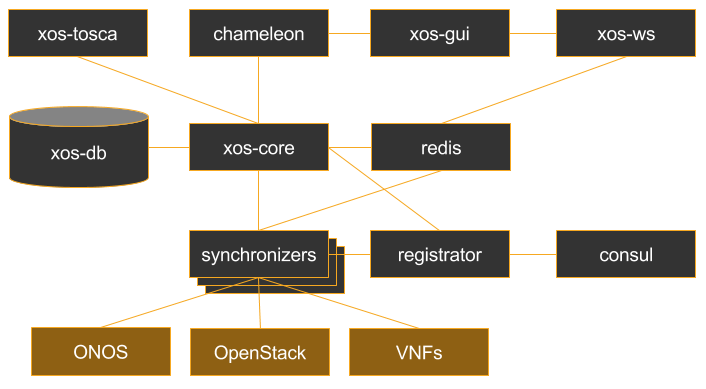
xos-tosca
Enable well adopted standards to be used in CORD
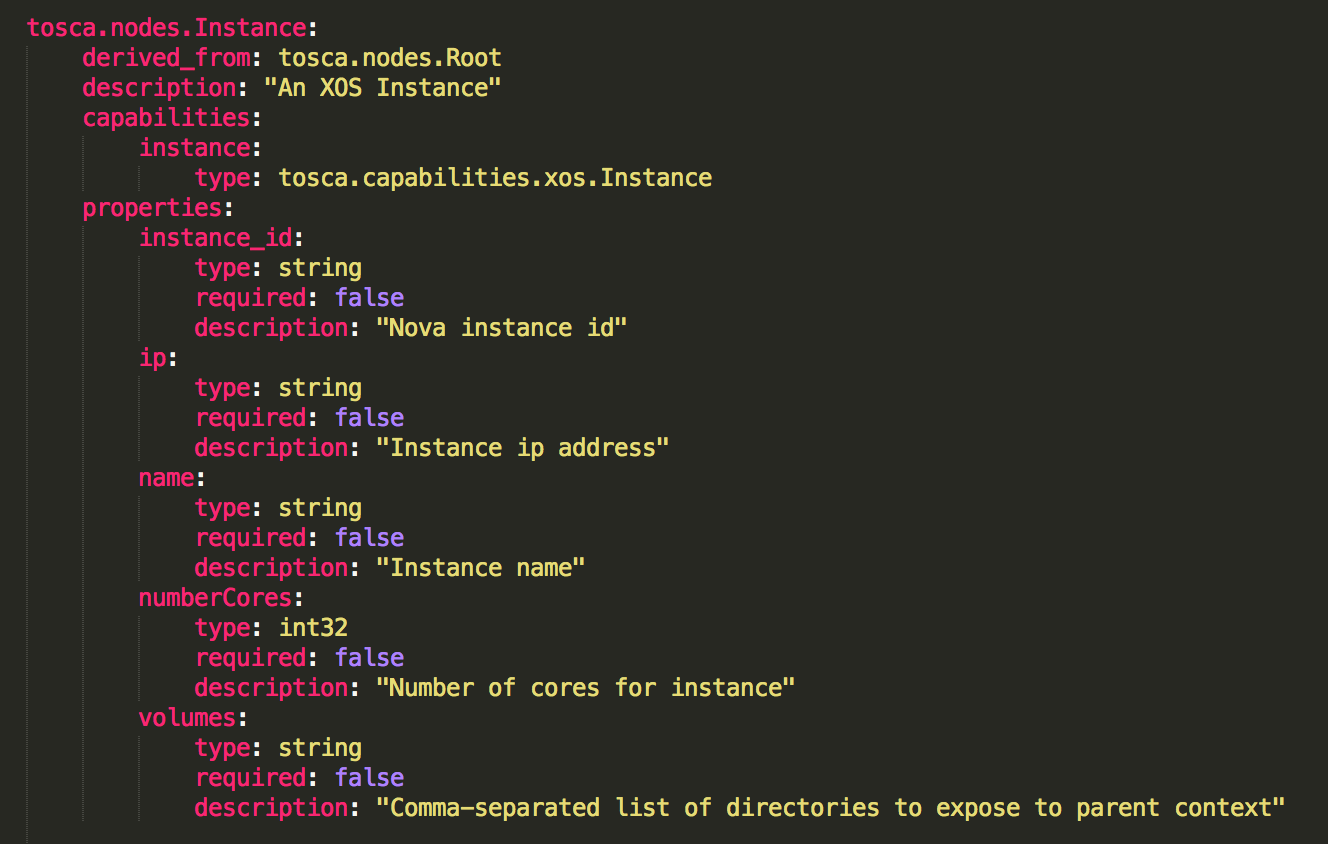
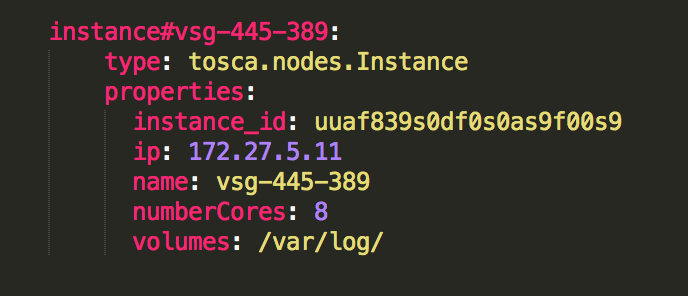
Chameleon
Provide a binding between the
gRPC APIs exposed and
REST APIs
-
borrowed from VOLTHA
-
expose a python webserver
xos-ws
Listen to changes in the
data-model
and emit events
via web-sockets
-
read only
-
provide real time notification
-
enable progressive caching in the GUI
xos-gui
the operator portal
CRUD
+
Custom Views




Auto
generated
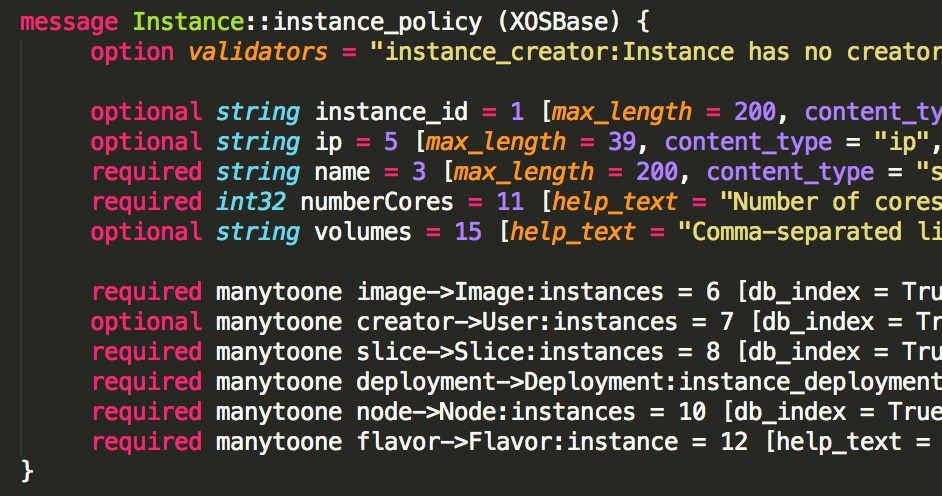
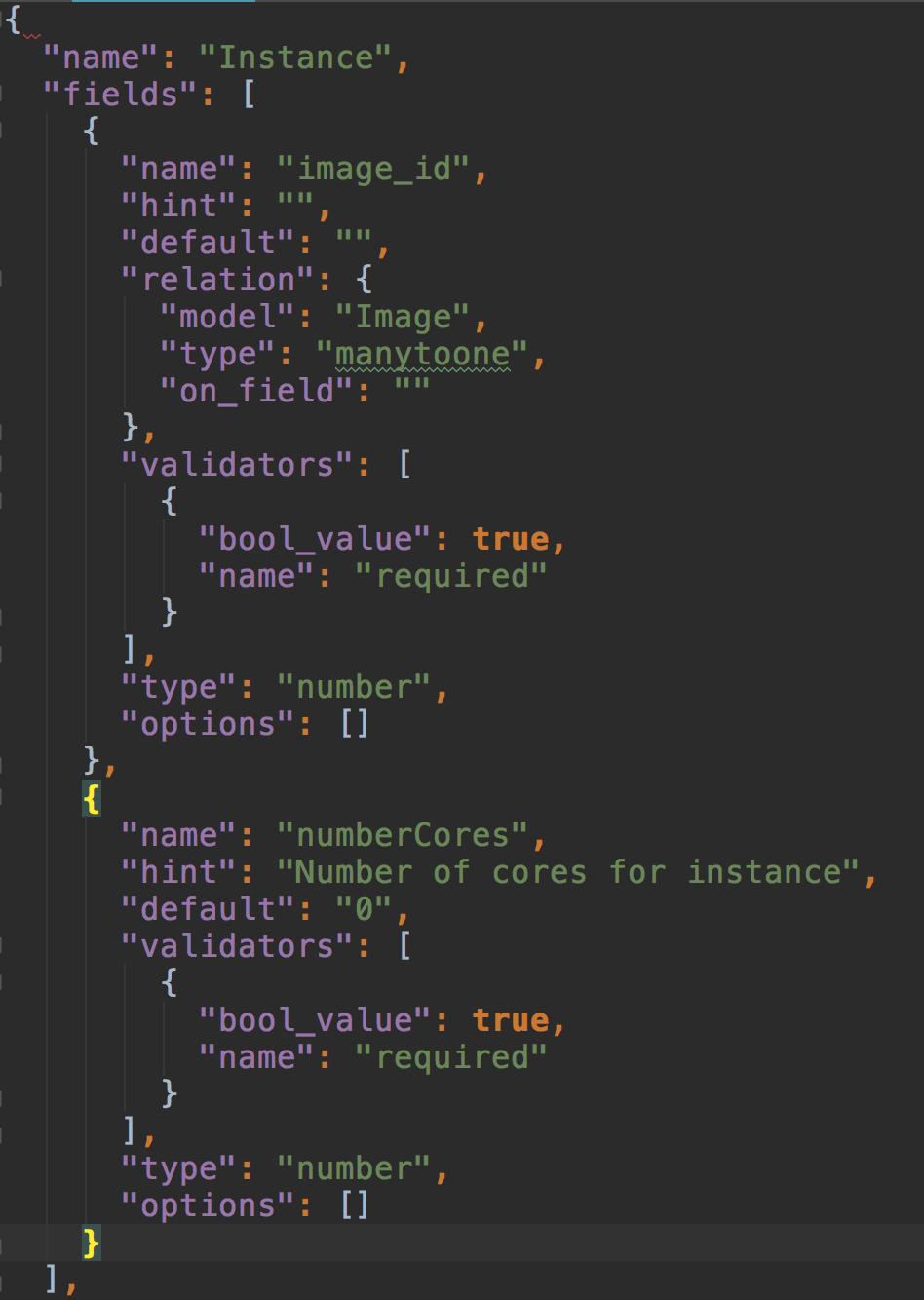
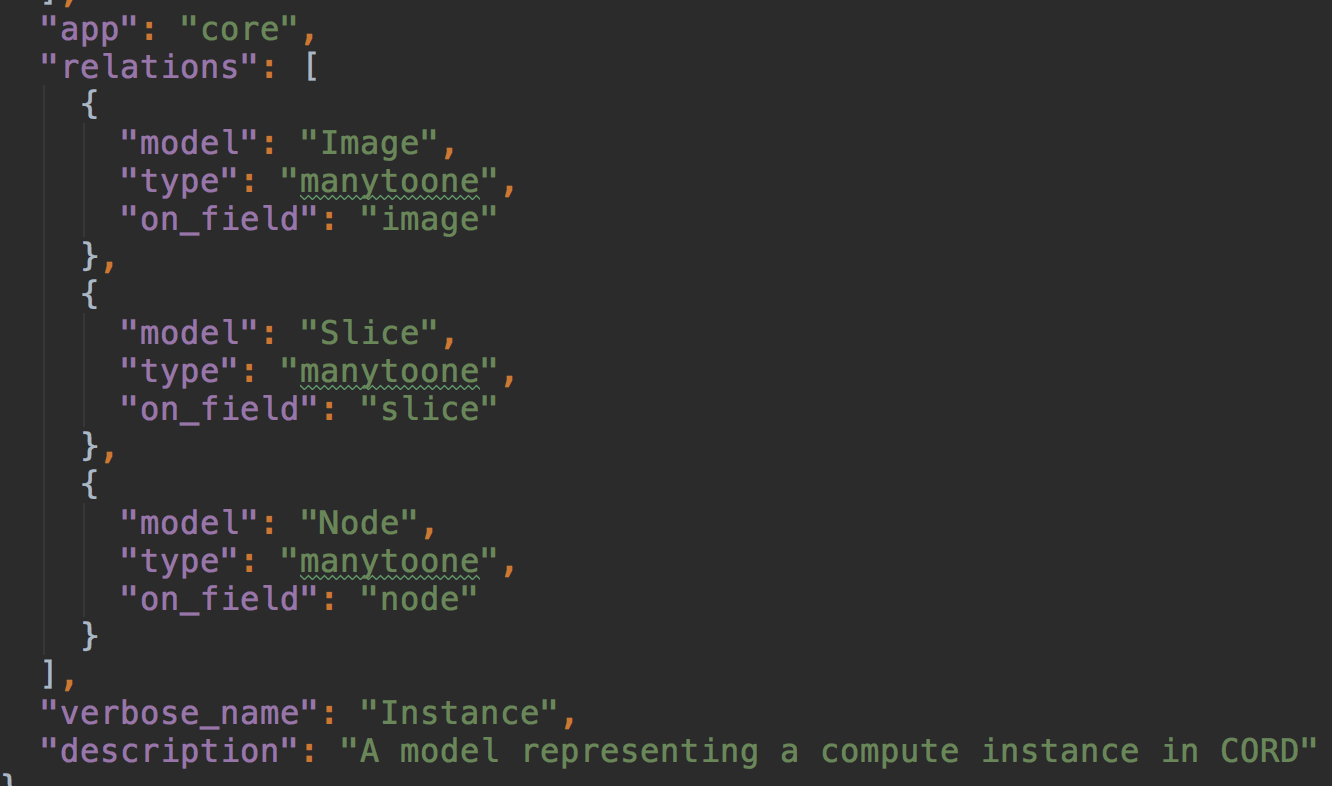
progressive
caching
progressive caching enables
- full text search
- dynamic population of relations dropdowns
- real-time notifications
keyboard
shortcuts
- Any view has its own shortcuts
- view them by pressing
?
debug
extensibility
Services are that different that is not possible to generate a
one size fits all
visualization
The XOS GUI is extensible by design and support:
Custom views
- At service level
- At profile level
Custom views can access any API provided by and any component defined in the gui-core
UI Components
A component is a set of
that combine functionalities in an isolated entity that can be included in an Html page
Html + Js/Ts + Css that combine functionalities in an isolated entity that can be included in an Html page
Component injection
- In the dashboard
- In the sidebar
Injected components can access any API provided by and any component defined in the gui-core
XosComponentInjector.injectComponent(
'#dashboard-component-container',
'xosAlert',
{config: {type: 'success'}, show: true},
'Welcome to CORD Build!',
false
);Extensibility is available through runtime loading of client side applications
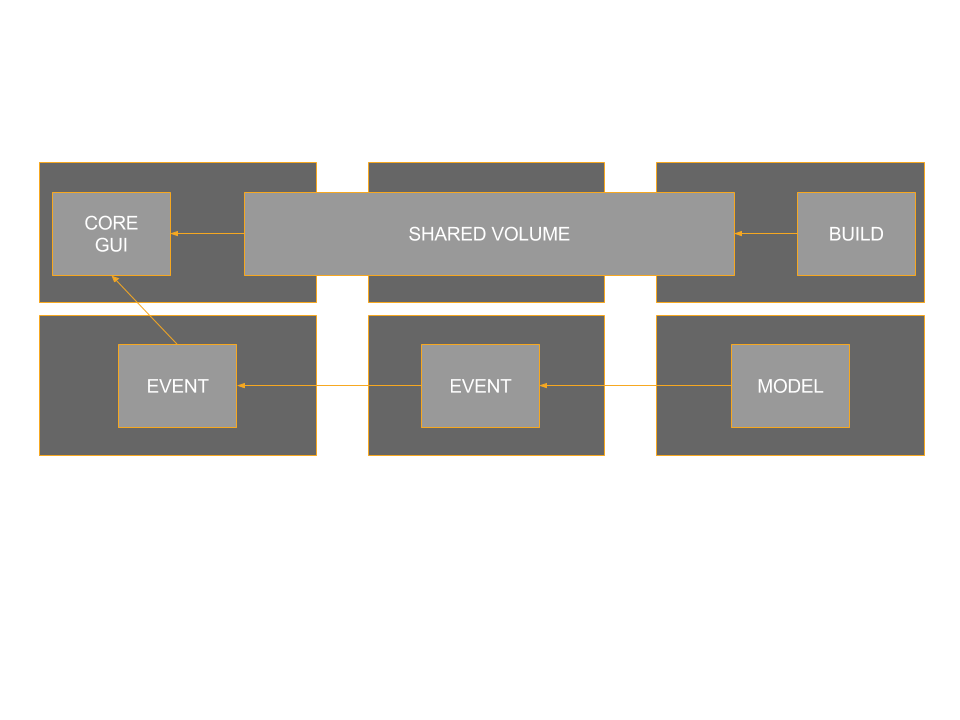
Generator
Based on Yeoman
Setup the application skeleton
Create a development environment
yo xos-gui-extension
guide.opencord.org
- Based on
gitbook - Combine
.mdfiles from all the repos
API Doc
- Generated from
xProto - Exposed via swagger
Roadmap
Operational status
Better reporting
Desktop notifications
Notifications history
Faster build
Docker multi-stage build
Webpack chunk build
Service Graph
Improve positioning
Add feedback state
Support constraints
XOS CLI
Document xossh
Create a wrapper around it
Slice.objects.all()
slice list
Get involved in CORD!
change networking
cutting edge technologies
fun community
Requirements
You are the user!
this is your call!
CORD-UI
Bi Weekly meeting
Monday 10 -> 11am PDT
Thanks
@teone
